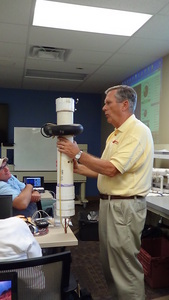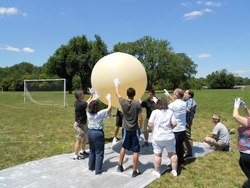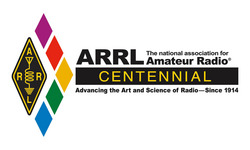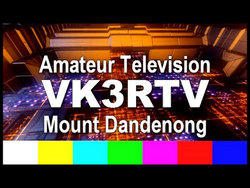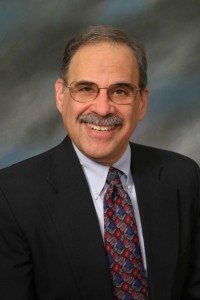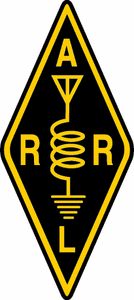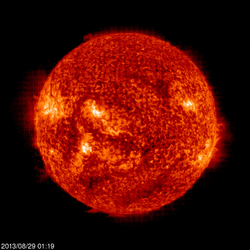 August 29, 2013 John E. Ross, KD8IDJ, Editor
| ||||||||||||
Public Service: Hams Continue to Support Rim Fire Response With California's gigantic Rim Fire still raging, Amateur Radio Emergency Service (ARES) and Radio Amateur Civil Emergency Service (RACES) volunteers continued to assist local emergency managers and responding agencies in filling communication gaps. Tuolumne County RACES Radio Officer Phil Fish, WB6GGY, told ARRL that with telephone circuits overloaded and cell service spotty, ham radio is keeping the lines of communication open. ARES-RACES members are helping to support communication between local government and the American Red Cross shelter. "They were just hungry for hams," Fish said of local emergency management officials. "We've had a great response from the local ham community." Volunteers, he said, have been putting in "some long days."
Tuolumne County ARES EC Carl Croci, NI6Z, said volunteers from Calaveras County ARES also have been pitching in. "We are still staffing the Red Cross Shelter and the community information phone lines with four ARES/RACES operators on the phones and two in the shelters," Croci said August 28. "There are now there shelters open at the Tuolumne County Fairgrounds, and the Red Cross is using FRS radios between the shelters, so the shelter ops are also monitoring those radios as well. The EchoLink system has seen a decrease in traffic asking about friends and relatives." The Red Cross is sheltering approximately 100 evacuees. Other ARES-RACES volunteers have been helping to handle telephone traffic in the county emergency operations center. Fish has described the terrain in Tuolumne and Mariposa counties as "very, very, very rugged." According to the National Interagency Fire Center (NIFC), the Rim Fire as of August 29 covers nearly 192,500 acres, with nearly 8000 acres burned over in the past 24 hours. The Rim Fire, 30 percent contained, has now has claimed more than 110 structures, and fighting it has cost more than $39 million. The NIFC says the fire has been crowning. The communities of Tuolumne City, Twain Harte, Long Barn, Pinecrest and the Hetch-Hetchy watershed are threatened, as are power lines in the region. Evacuations and road and area closures are in effect. Th Rim Fire is not expected to be fully contained for another 10 days or so. A series of time-lapse images has been posted that offer a perspective of the Rim Fire's rapid growth. Ham Radio in Space: "Ham Video" Transmitter is Now Aboard the ISS A Japanese cargo spacecraft has delivered an Amateur Radio on the International Space Station (ARISS) digital TV transmitter to the ISS. The equipment arrived August 9 and is being stored in the space station's Columbus module. Gear includes the transmitter, power supply, NASA-provided Canon XF-305 camera, and antenna cables, reports ARISS-Europe Chair Gaston Bertels, ON4WF, who says the DATV transmitter is being dubbed "Ham Video."
"Installation will be done by US astronaut Michael Hopkins, KF5LJG, who has been trained for the commissioning of the Amateur Radio digital video equipment," Bertels said in a report posted on the ARISS-EU website. Hopkins will be part of the ISS crew increment heading to the station next month. The 10 W EIRP S-band (2.4 GHz) Ham Video transmitter will use one of the L/S-band "patch" antennas installed on the ISS' Columbus module. Commissioning will involve a series of tests that will be performed over the course of three or four orbits. Bertels says it's possible that the transmitter will send a continuous signal between commissioning steps, offering Amateur Radio ground stations a chance to test and tune their receiving equipment. "The transmissions will be performed in automatic mode, without requiring crew time," Bertels said. "The camera, which runs on a battery, will not be used, and the ground stations will receive a black image." A preliminary "Experiment Sequence Test" (EST) is planned for August 28-29 involving ARISS ground station IK1SLD in Northern Italy. "IK1SLD, an ARISS telebridge station often used for educational ARISS school contacts on VHF, has been upgraded for S-band reception," Bertels pointed out. Italian manufacturer, Kayser Italia has delivered a 1.2 meter dish, a down converter and precision tracking motors, all part of the ESA-funded equipment. "For the EST, the station will receive a DATV signal from a local, low-power S-band test transmitter," said Bertels. The decoded signal will be streamed over the web to the British Amateur Television Club server, to which BATC has offered ARISS free access. ESA investigators will evaluate reception via the streaming video. "The test transmissions at IK1SLD will cover the different frequencies and symbol rates available on the Ham Video transmitter," Bertels said. Receiving the DATV signal will be the greater challenge, Bertels says. "[D]ecoding should be possible for a ground station equipped with a 1.2 meter dish, when the ISS is within a range of about 800 to 1000 km," he said in an overview paper on the project. This would limit the DATV reception window to about 3 or 4 minutes during a favorable pass. "ISS tracking will be far more demanding than it is for receiving VHF signals," he added. According to Bertels, Kayser Italia is to provide five ground stations in Europe. Once the Ham Video transmitter becomes operational, it will be used for ARISS educational contacts with schools in Europe. There are no immediate plans to deploy downlink video for ARISS contacts with US schools, in part because no North American ground stations have been planned. Read more. -- Thanks to ARISS-EU Chair Gaston Bertels, ON4WF; ARISS-EU; Kayser Italia Education: ARRL Takes Technology to the Classroom -- a Dozen Teachers at a Time Through its Teachers Institutes the ARRL's Education & Technology Program (ETP) has been working for more than 10 years to promote the teaching of technology. In a new teach-the-teachers twist, the program recently sponsored a Teachers Institute on remote sensing and data gathering. At the inaugural four-day session held in late July in Dayton, Ohio, 12 teachers explored the use of remote sensors for gathering data in space, on Earth and beneath the sea.
"Remote sensing allows us to reach inhospitable and inaccessible portions of our environment for study," explained ETP Director, Mark Spencer, WA8SME, who coached the Dayton workshop. Spencer pointed out how the thread of remote sensing technology runs through all aspects of basic electronics, the science of radio, and microcontroller programming. The Dayton Amateur Radio Association -- which sponsors the Dayton Hamvention® -- funded and hosted the TI seminar in its brand-new classroom. All participants previously had attended an introductory Teachers Institute. In the workshop, the teachers configured sensor packages for a high-altitude balloon, a SeaPerch underwater robot and a land-based Boe-Bot. Spencer introduced Mars Lander/Marine Amateur Radio Robotics Exploration Activity (MAREA) concepts in his class. MAREA is a hands-on learning activity designed to engage students in learning programming skills for command and control of robots, using Amateur Radio packet as the means of communication. Students in the workshop used APRS to send commands to remote robots as well as via the ham radio packet station aboard the International Space Station!
Spencer wants to see more teachers incorporate science, technology, engineering and mathematics -- or "STEM" -- education, so they can help their students understand the concepts behind classroom demonstrations, not just observe the end result. "Having students witness a balloon launch is not STEM education," he says. "Having students learn about and develop the sensors carried on the balloon, then participate in the balloon launch and recovery and apply mathematics to give meaning to the collected data to study the environment is STEM education," he maintains. Teachers attending the Dayton session got the point. "This was the most valuable workshop I have attended," one teacher enthused. "It introduced the way STEM should be taught." Another teacher, who will be designing and teaching a STEM class, feels the workshop gave her a valuable head start. "Career changing" was how middle school teacher Bill Richardson, N5VEI, from Mississippi described the workshop. He said remotely controlling the robots using XBee® modules or via the ISS offers "so many potential lessons that I am giddy about teaching it." His school will begin teaching binary numbers, binary searches and analog-to-digital conversion to eighth graders. This seminar marked the first time MAREA concepts were taught in a large group, Spencer said. A number of the teachers later expressed interest in incorporating MAREA activities in their own classroom lessons. Spencer also presented two new classroom resources for using satellite telemetry data from experiments to be launched on the next AMSAT Fox satellite, set to launch in 2014. These will help students study satellite "wobble" and power regulation from solar panels. ______________________________________________ Your contribution to the Education & Technology Program will help ARRL to continue offering professional development opportunities for teachers. ______________________________________________ Your League: Share Your Knowledge at the ARRL Centennial Convention The ARRL has issued a call for papers and programs to include in its planned extensive slate of ARRL Centennial Convention forums and presentations. The convention will take place July 17-20, 2014, in Hartford, Connecticut. Dan Henderson, N1ND, is the Centennial Convention Programs and Forums Coordinator.
"Since this is a once-in-a-lifetime event, we are looking for programs with a 'Wow!' factor to match the Centennial theme," says Henderson. "We want participants to leave forums saying, 'Wow! That inspired me to stretch my horizons!'" Program organizers seek forum topics in five broad categories:
Proposed programs should address not only current technology and techniques, but innovations that are likely in the near future. Since the Centennial Convention will attract a diverse audience, forums should have broad appeal, although, Henderson says, organizers will consider topics that target more specialized or niche interests. Programs should be either 50 minutes or 110 minutes long, including time for a question-and-answer period. The convention staff will provide video and image projection systems as needed. Several selected programs may be streamed live on the Internet for the benefit of those unable to attend the convention in person. Submit forum proposal outlines on the ARRL National Centennial Convention web page. Complete all fields in the "Program Presenter Proposal" form. The deadline to submit proposals is October 31, 2013. Program organizers will review proposals and render final decisions by December 31. Henderson expects to have the Centennial Convention fleshed out by the end of March. For more information visit the ARRL Centennial Convention Presentations web page or contact Dan Henderson, N1ND (860-594-0236). Events: Let the World Digital ATV QSO Party Begin DATV enthusiasts around the world will take part in the annual World Digital ATV QSO Party August 30 and 31 through dedicated US repeaters, some direct transmissions and even via Skype. The clearing house for all transmissions will be the VK3RTV digital repeater in the Melbourne, Australia, area, with Peter Cossins, VK3BFG, as anchor. All transmissions will be streamed live via the British Amateur TV Club website. The event was first held in 2011 as part of the Amateur Radio Victoria centennial.
VK3BFG says ATVers should join the party personally with short demonstrations or anything else that might be of interest. The World Digital ATV QSO Party kicks off August 30 at 0930 UTC with check-ins by Australian stations. External Skype stations should monitor the BATC website and log into the Skype event station, "atvqsoparty." August 31 at 0100 UTC ATVers on the WR8ATV DATV repeater in Columbus, Ohio, will be patched in, followed by the W6ATN Southern Californian ATV network, at which time Ken, W6HHC, will update the DATV Express Project. US repeaters will have their own net control stations. -- Thanks to Jim Linton, VK3PC/WIA Events: EmComm East Conference to Feature ARRL COO WJ1B
ARRL Chief Operating Officer Harold Kramer, WJ1B, a Boston Marathon finish-line volunteer at the time the bombs exploded, will discuss his experience at EmComm East, an ARRL-sanctioned Amateur Radio emergency communication conference, September 29 in Rochester, New York. The conference is aimed at radio amateurs involved in emergency, disaster response and recovery communications. Participants can attend training sessions on technical topics, learn from served agencies, and interact with other operators from around the region. Most presentation slots have been filled, but a few openings remain. If interested, contact EmComm East or visit the conference website. -- Thanks to Jeff Wigal, WY7Q, via The ARES-E Letter Events: Make Plans for Pacificon 2013!
The ARRL Pacific Division Convention -- Pacificon 2013 -- is October 11-13 at the Santa Clara, California, Marriott. Registration is now underway. Pacificon 2013 is sponsored by the Mount Diablo Amateur Radio Club (MDARC). This year's program includes a broad selection of presentations and forums covering topics of interest for all segments of the Amateur Radio community, from youth education, operating, public service, technical (SDRs, homebrewing and more), DXCC, MARS, and license preparation and testing. The Saturday SDR forum will include presenters from Elecraft and FlexRadio. Among the featured presentations will be Friday's Antenna Seminar, conducted by Paul Howes, WA6GYY, with an outstanding lineup of speakers (there is a $15 charge, and Antenna Seminar tickets must be purchased in advance). Pacificon 2013 is looking for additional forum presenters. For more information on Pacificon 2013, contact Misa Siemons, KJ6BUE, or visit the Pacificon 2013 website. Talk-in will be on 147.060 MHz+ (CTCSS 100 Hz). Regulatory: Australia Ends Higher Power Trial for Radio Amateurs The Australian Communications and Media Authority (ACMA) has ended an 18-month trial that allowed participating Advanced licensees in that country to run up to 1 kW on the HF bands. Advanced licensees Down Under are limited to 400 W PEP. ACMA reached its decision earlier this month following a detailed assessment begun last March.
"After taking into consideration all the data obtained as part of the assessment process, the ACMA is of the view that the arrangements put in place for the trial should not continue," the regulatory agency said in terminating the arrangement. ACMA pointed out that slightly less than 3 percent of the 10,690 eligible licensees -- 297 in all -- took advantage of the trial. Operators had to apply for permission to participate in the trial. "Of the 297 that did obtain the authorization, the ACMA was advised by some participants that they had not used higher power," the agency said in its decision. ACMA said participant comments it received via the Wireless Institute of Australia (WIA) indicated that the benefits of running higher power "were confined to those respondents and do not demonstrate broader benefits to the wider community." ACMA also said some participants' knowledge and awareness of Australia's RF exposure regulations "did not meet ACMA expectations." ACMA said that while it's aware that some countries do permit higher transmitter power output levels than Australia does, "these countries are likely to have different and unique regulatory arrangements and policy considerations." The regulatory agency said it must base its decision "on the data collected during the assessment process and the requirements of the domestic legislative environment." Authorization to operate at higher power output expires August 31. The WIA for some time has been pushing for higher power limits for Advanced licensees, who feel the current 400 W power limit puts them at a disadvantage, especially in contests, while other countries permit 1 kW or more. After the New Zealand Association of Radio Transmitters (NZART) was able to convince regulators in that country to raise the power limit on similar grounds, the WIA was encouraged to again pursue the matter. After the WIA was informed of ACMA's decision to end the trial, and, following talks, it was decided that the ACMA would revisit the issue next year. -- ACMA, WIA, Jim Linton VK3PC On the Web: Vanity HQ Website Pulls the Plug After serving the US Amateur Radio community for 14 years Mike Carroll, N4MC, has shut down his Vanity HQ website.
"Vanity HQ is closed," now greets visitors to the site. "It's been a good 14 years. Thank you everyone for participating, sending bug reports and comments, and I especially thank all the Elmer volunteers who have helped me over the years. It is time for me to move on. Regards to all." The site has had its ups and downs over its lifetime. Carroll made a similar announcement in 2004, citing "a shift in my priorities," but the site eventually remained open. Over the years Vanity HQ often was the first stop for radio amateurs seeking a vanity call sign. Among other information, it provided a list of recently issued vanity call signs as well as available call signs and active vanity call sign applications. In 2008, the ARRL Board okayed a partnership with the Vanity HQ site to have QST Silent Key listings included in the Vanity HQ history project in an electronically searchable format. After Carroll announced he was shutting down in 2004, Eldon Lewis, K7LS, inaugurated his RadioQTH website, which offers essentially the same information Vanity HQ did. Solar Update Intrepid Sun Watcher Tad Cook, Seattle, Washington, reports: Solar activity slipped back again this week, with the average daily sunspot number declining nearly 50 points to 77 and average daily solar flux by nearly 10 points to 116.4.
The latest prediction from NOAA/USAF has solar flux at 108 on August 29, 105, 100 and 105 on August 30 through September 1; 110 on September 2-3; 112, 110, 115 and 120 on September 4-7; 125 on September 8-14; 120 on September 15; 115 on September 16-17; 110 on September 18, and 105 on September 19-21. Until August 27-28, the forecast had solar flux dropping below 100 on August 30 through September 2, but the forecast has been upgraded for that period. But flux values are predicted to drop below 100 on September 26-28. Predicted planetary A index is 8 on August 29; 20 on August 30-31; 10 and 8 on September 1-2; 5 on September 3-4; 8 on September 5; 5 on September 6-9; 10, 15 and 18 on September 10-12; 8 on September 13-14; 5 on September 15-16; 12, 18 and 15 on September 17-19, and 5 on September 20-21. In the August 30 bulletin watch for updated short-term forecasts and reader reports. This Week in Radiosport
Upcoming ARRL Section, State and Division Conventions and Events
Find conventions and hamfests in your area. ARRL -- Your One-Stop Resource for Amateur Radio News and Information Join or Renew Today! ARRL membership includes QST, Amateur Radio's most popular and informative journal, delivered to your mailbox each month. Subscribe to... NCJ -- National Contest Journal. Published bi-monthly, features articles by top contesters, letters, hints, statistics, scores, NA Sprint and QSO Parties. QEX -- A Forum for Communications Experimenters. Published bi-monthly, features technical articles, construction projects, columns and other items of interest to radio amateurs and communications professionals. Free of charge to ARRL members: Subscribe to the ARES E-Letter (monthly public service and emergency communications news), the ARRL Contest Update (bi-weekly contest newsletter), Division and Section news alerts -- and much more! | ||||||||||||
.png)
.jpg)
